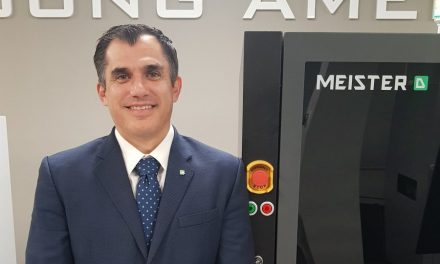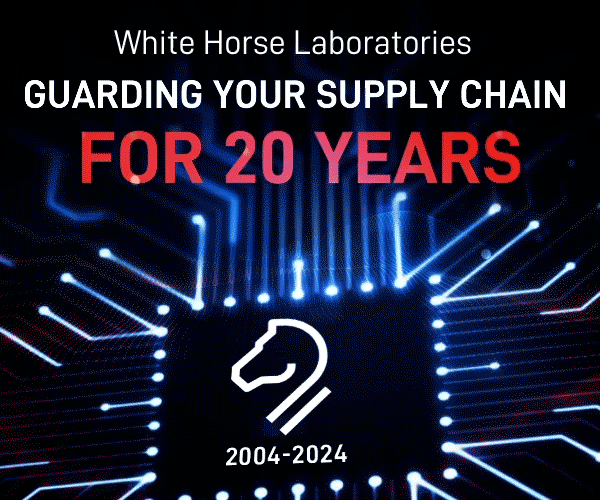Counterfeit Materials: The Good Guys vs The Bad Guys

By Michael Ford, Aegis Software

Michael Ford
The rapid progress in the application of new technologies is making everyone’s life easier, enabling us to do things faster, smarter, and more efficiently. There are those however, who see the exact same opportunities as being a way to take advantage of others. One example is in the area of counterfeit electronic and mechanical materials, components and assemblies. As manufacturers and counterfeiters try to out-smart each other with their respective detection and concealment efforts, all the while escalating costs and risk in the process, we should be thinking about what can be done to break this cycle before something very serious happens.
Most people are concerned about the increasing trend of counterfeit materials ingress. A contributor to the trend, is that more companies, after reading about the problem, are now inspecting for, and finding, counterfeit material within their operations. The discovery of counterfeit material is not constrained to new materials. There are cases reported that go back to include specialist materials warehoused as far back as the 1970s. As electronic and electro-mechanical products become more and more a critical part of our lives, on which we depend for our well-being in countless ways, the need for zero-defect products increases. The ingress of counterfeit material will have potentially disastrous effects if allowed to continue.
There are many forms of counterfeit, which include for example, materials specifically manufactured to replace genuine materials, as well as those that are of inferior quality or have reached their end of life, which are then re-marked and represented as higher value components. Detecting counterfeit materials with increasingly sophisticated technology, in itself, only serves to motivate counterfeiters to improve the cleverness of their concealment. We see examples already, where a reel of one thousand SMT components on which the first one hundred are genuine, with then every seventh component, a counterfeit, a tactic specifically employed to defeat regular incoming material inspection procedures. Creating such complex reels is likely to be automated and quite sustainable.
There are real people behind all of these activities, who are making decisions day after day about where they can gain opportunity, without being discovered. To remain in business, counterfeiters have to stay under the radar. The more light that is shone on their practices, the greater the risk that action may be taken to discover the origin of counterfeit ingress, increasing their risks, and reducing their profits. Only a small sub-set of counterfeiters are out to sabotage specific products, but they are all removed from the consequences of their actions, which is an extremely dangerous situation.
This is a human problem. As humans, we are all susceptible to taking chances to “beat the odds” in whatever we do in our daily lives. This is not something that divides us by where we live, or any particular groups of thinking with which we align ourselves. Most people when driving, for example, will calculate how fast they can actually get away with in a 55-mph speed limited zone, so as not to gain the attention of law enforcement. Perhaps one person may decide 60mph is acceptable, others, a little more perhaps, without really focusing on the increased danger to other road users and pedestrians. Very few people follow every single rule and guideline. What makes humanity so colorful are the infinite shades of gray that we exhibit.
Taking the example of driving on the highway, thanks to technology, there are now tools in place that are very effective against the increasing complacency of driving over the speed limit, or even racing an amber light. Road safety cameras have been changing the game somewhat. As long as we believe that every safety camera is likely to catch any serious exception to the rules, be it driving too fast, or running the edge of a red light, we modify our behavior. In order to stop the escalation in the ingress of counterfeit materials, we have to use technology to do the same thing. We need a way not only to expose counterfeit activity, but to establish a clear line of responsibility for the violation. In the case of the road safety cameras, a photo is taken of the license plate of the car. The registered keeper, or owner, of the car, is then seen as the responsible person, and has to disclose who was actually driving the vehicle at the time.
With materials, it is not the current owner of the materials that is responsible for the material being a counterfeit, but actually all of the prior “owners”. Starting with the original component manufacturer, a secure and tamper resistant packaging and tracking methodology needs to be employed. Each “touch-point” throughout the whole supply-chain operation needs to be tracked. Should any package be suspected of being tampered with, the last point of responsibility can be found, to whom the ticket can be issued. Utilizing technology such as block-chain ensures that such records cannot be altered. As the supply-chain itself can involve quite a complex series of transactions, which is the opportunity that counterfeiters exploit, a simple yet comprehensive set of rules needs to be defined in the form of a standard, such that no matter what technology or specific solution is adopted in different cases, there is an overall consistency in requirements and function of a secure supply-chain.
The final stage of this secure supply-chain vision is the need for exact traceability throughout assembly. Most materials are made and delivered in bulk, without the scope for individual identification or serialization. Even so, once the secure package is opened after it is received at the factory, the assignment and consumption of the contents must be tracked. Should any material then be discovered or be suspected as being counterfeit, or indeed have another quality issue, the responsibility can be tracked, without doubt, back to the specific incoming material package, and hence back throughout the whole of the supply-chain journey. Such exact traceability of materials, including accurate management of consumption and spoilage, is found as almost a by-product of today’s most modern digital MES systems. The relative cost for gaining exact traceability, which represents the important policing activity of the secure supply-chain, is very low, and almost infinitely beneficial when compared to the potential costs of the consequences of not being able to stop counterfeit ingress.
A discussion on this subject, with the sharing of ideas to go forward, will take place at the 2019 IPC APEX show, as part of the discussion of a proposed extension to the IPC-1782 standard towards the definition of the requirements and procedures behind the secure supply-chain. Everyone is welcome to join, what we hope will be a clear step towards the elimination of the risk of counterfeit materials, from within the cars we drive, or that drive us, the planes we fly on, the medical devices we hope we will never need, as well as machines that keep us safe from enemies.












